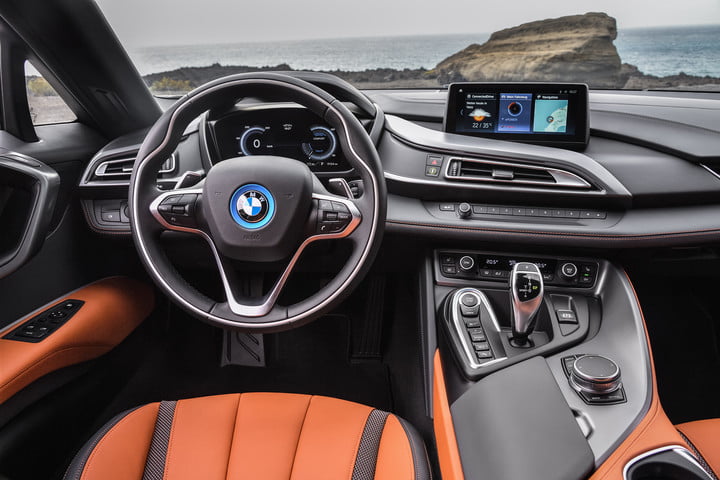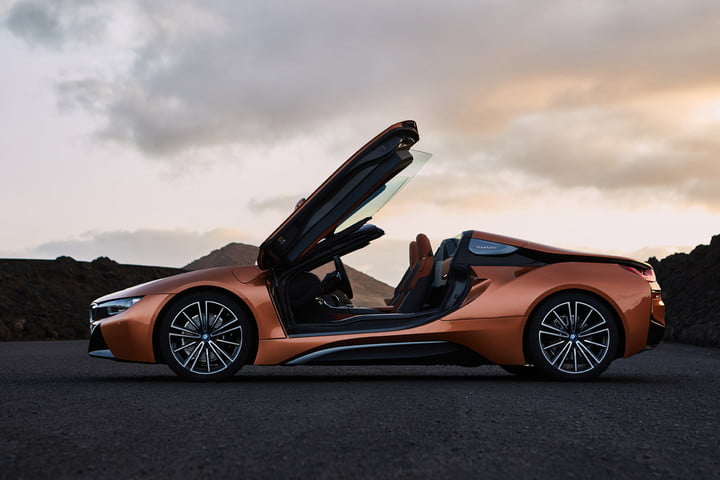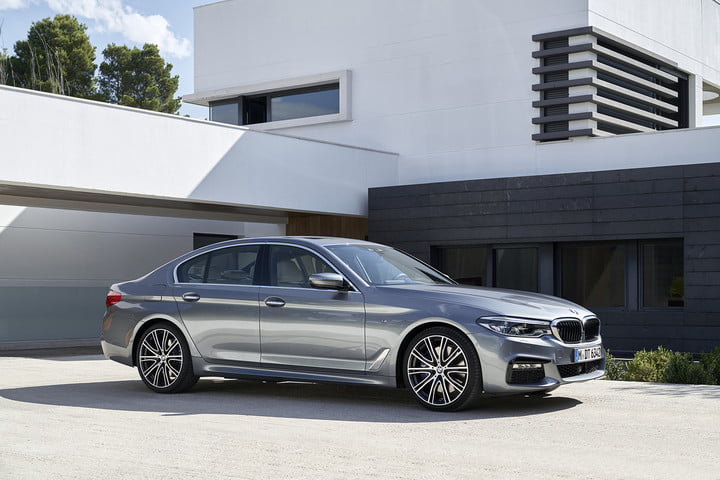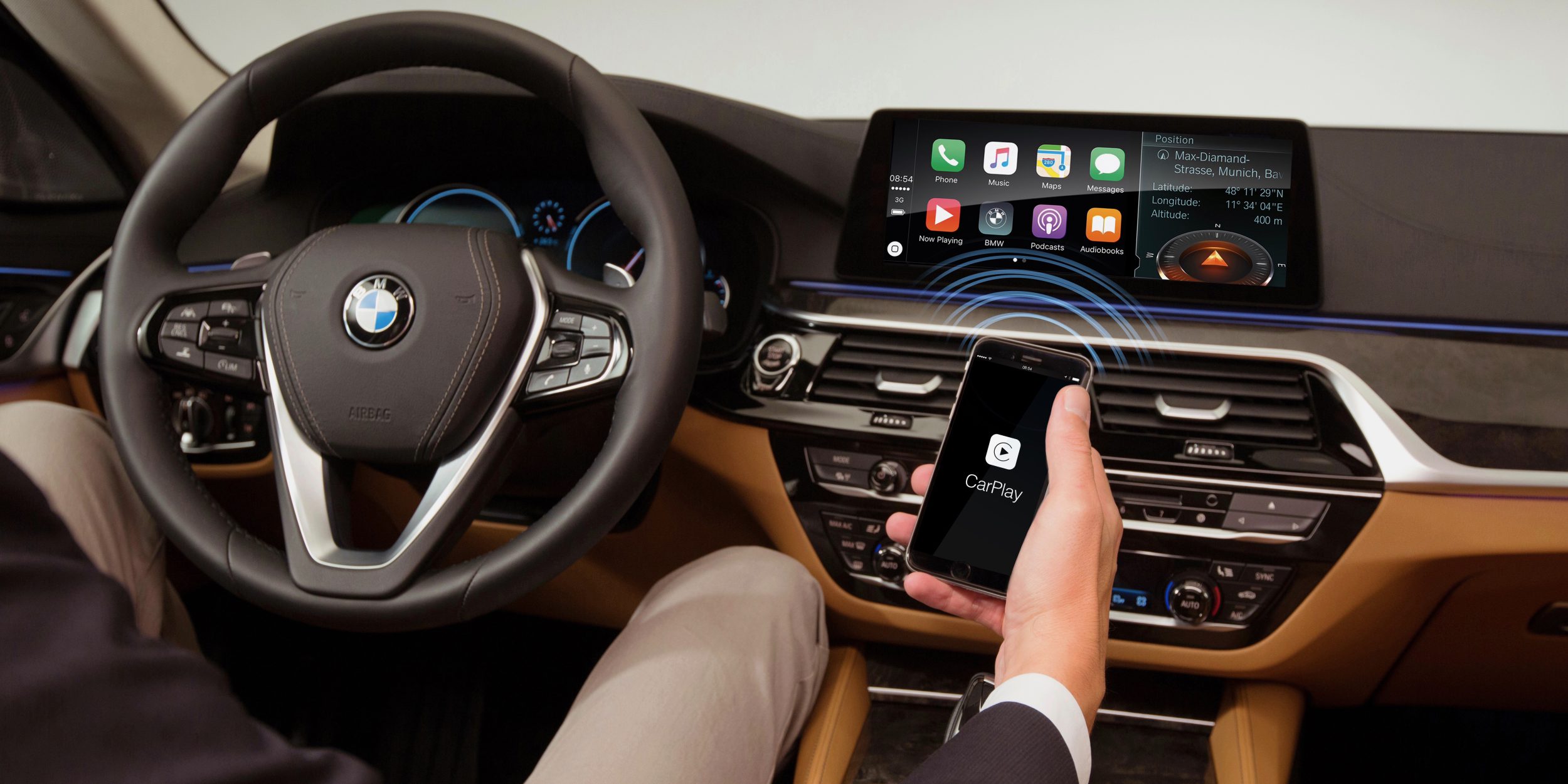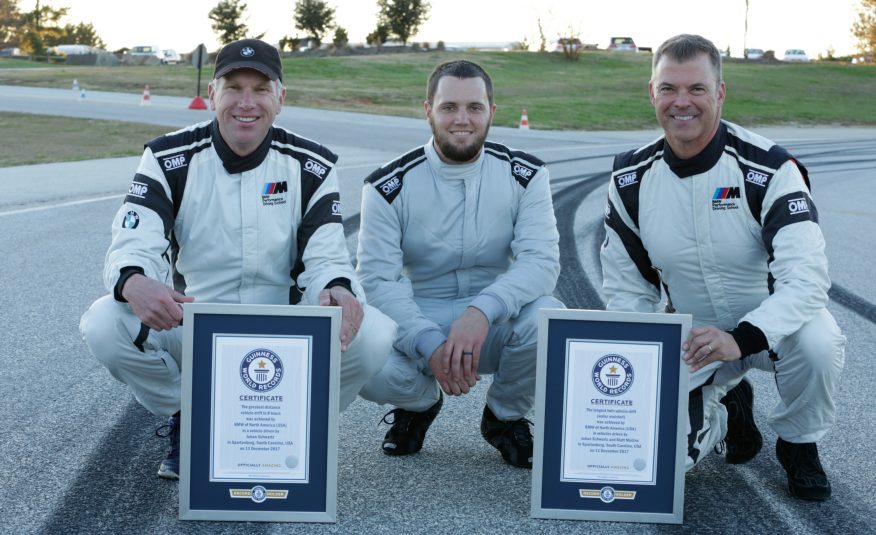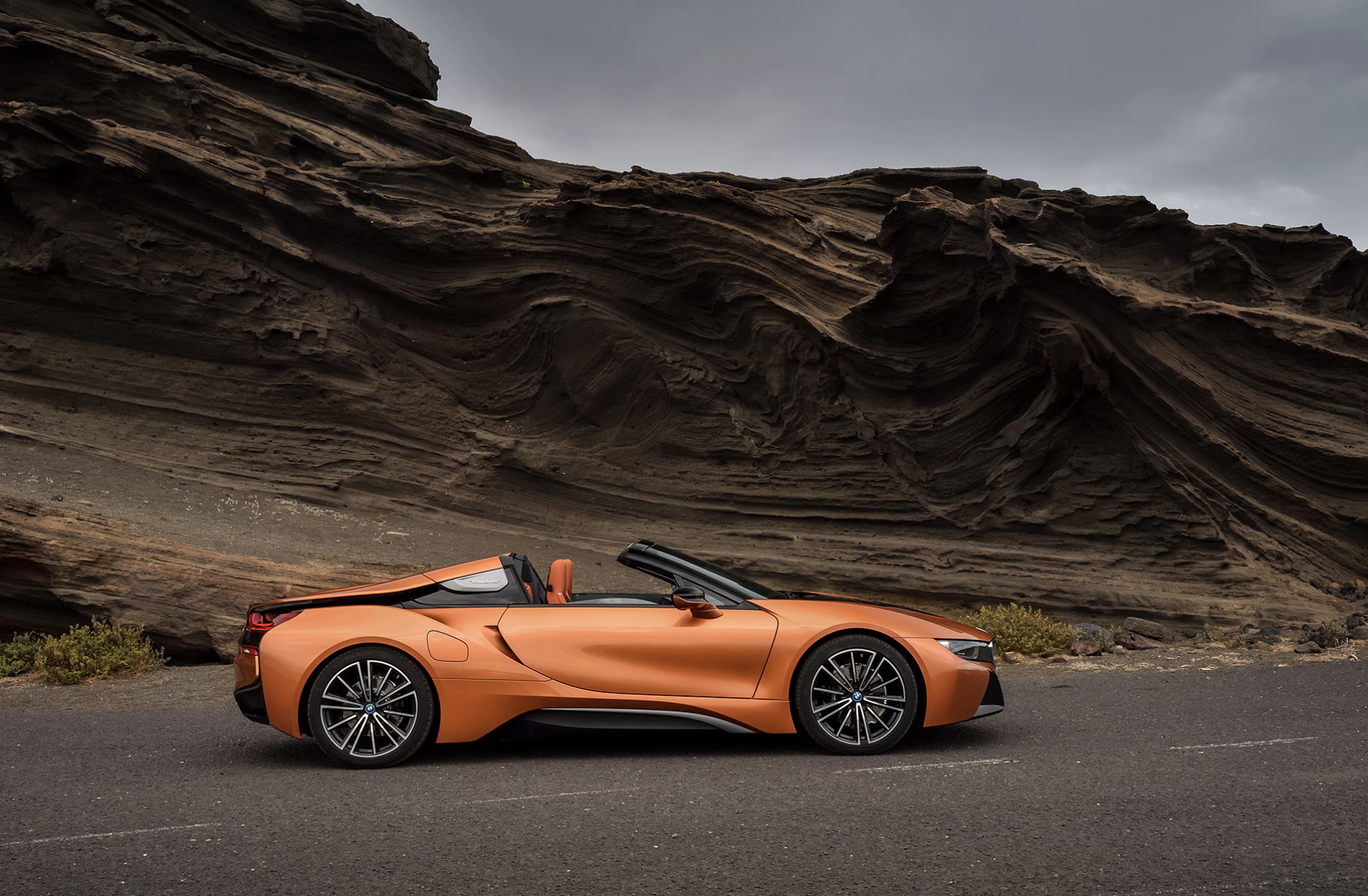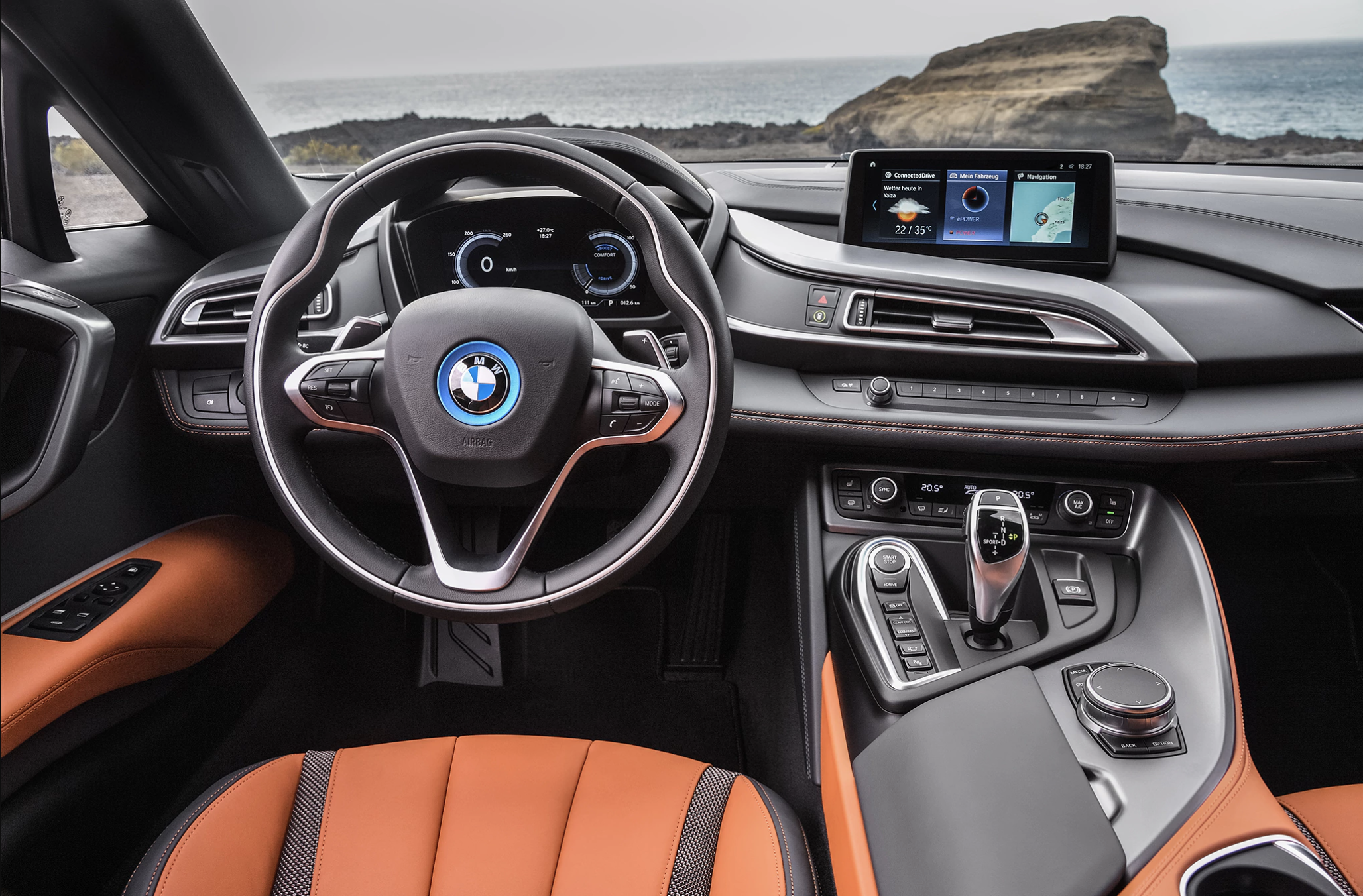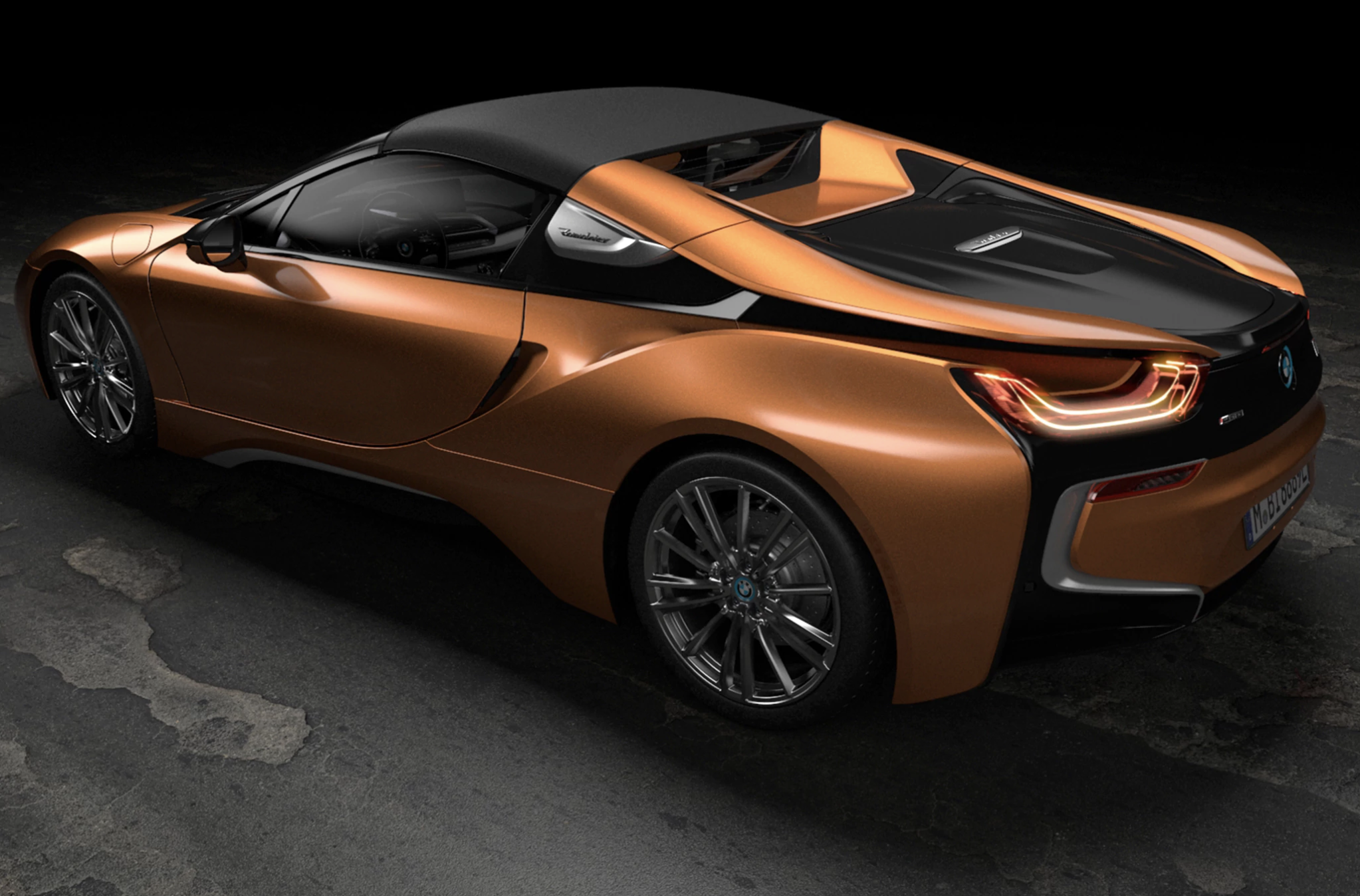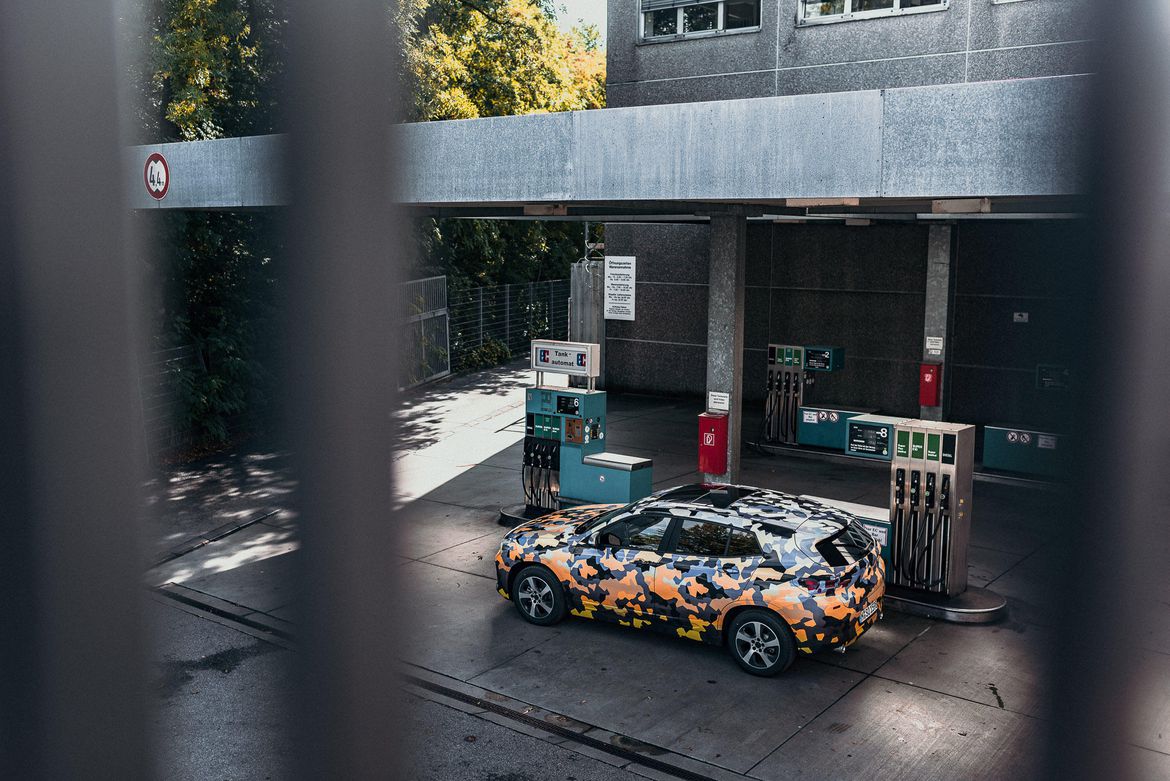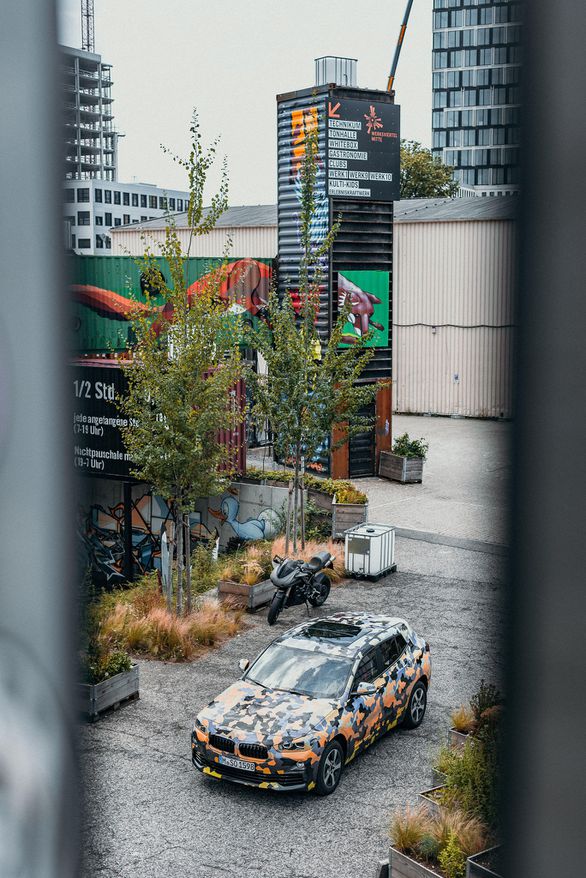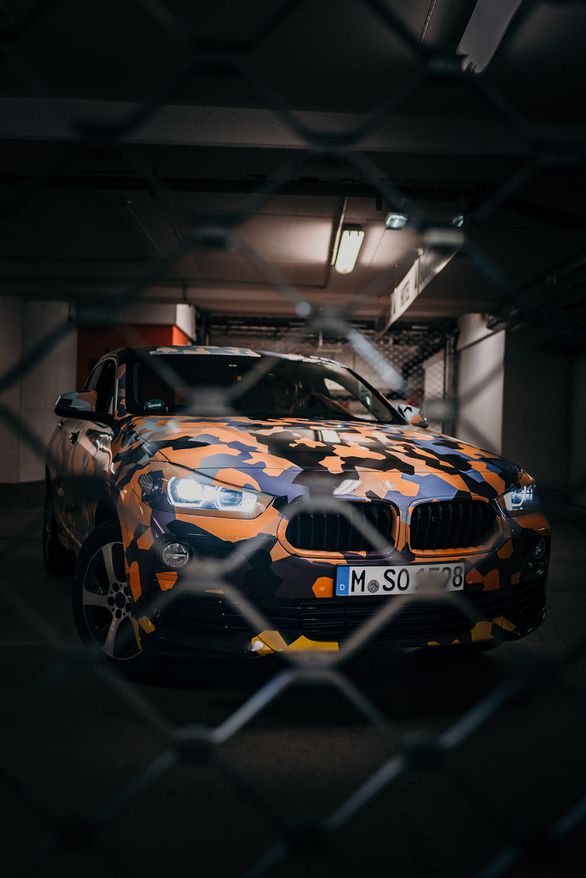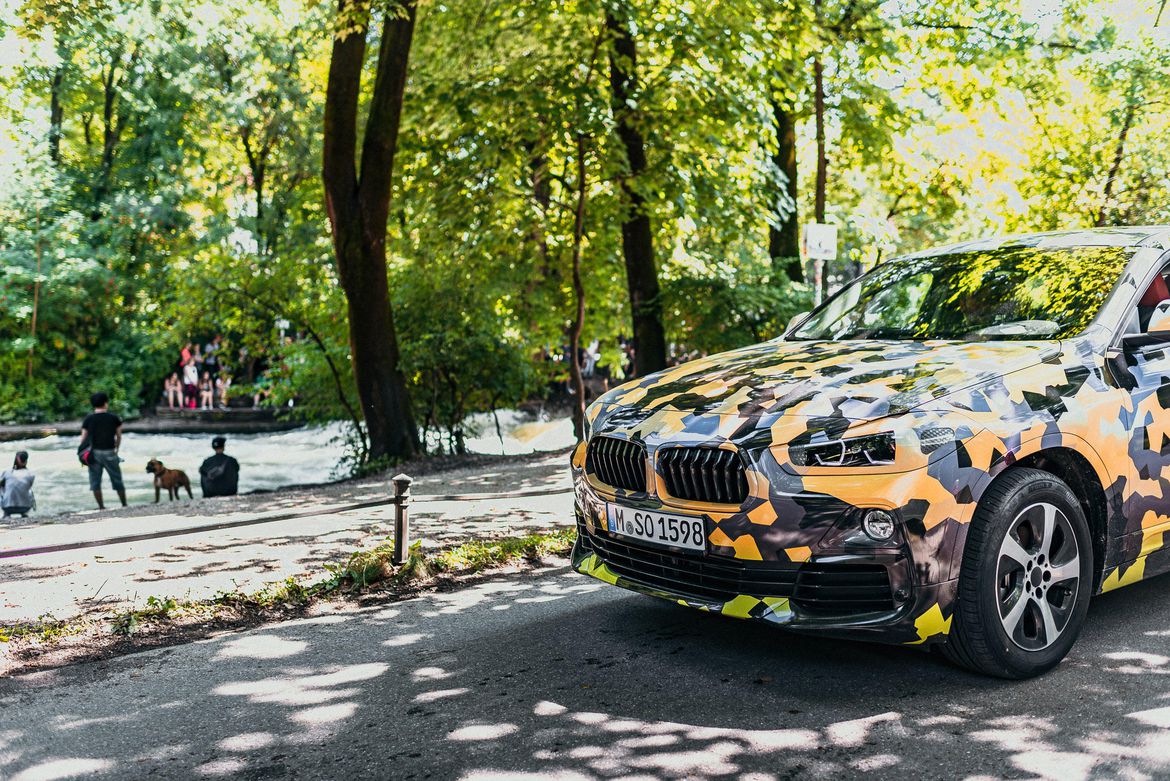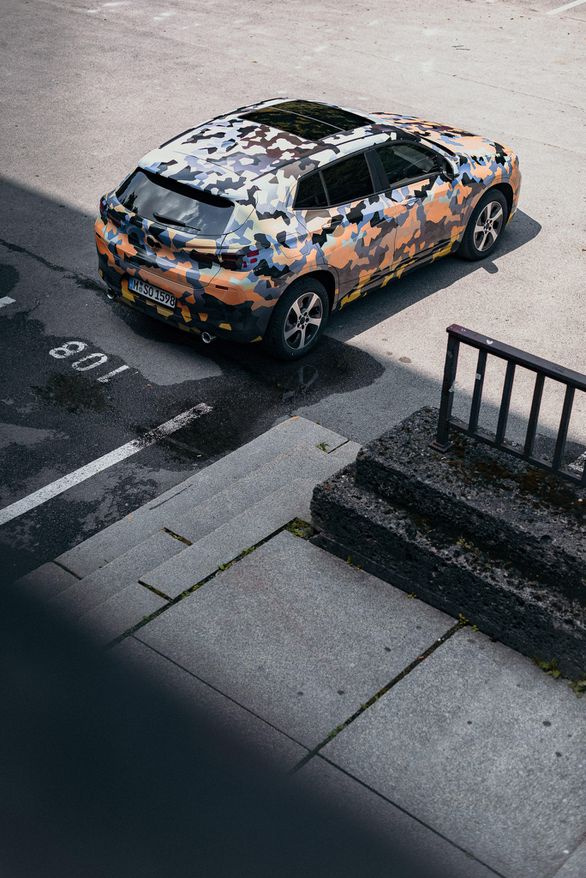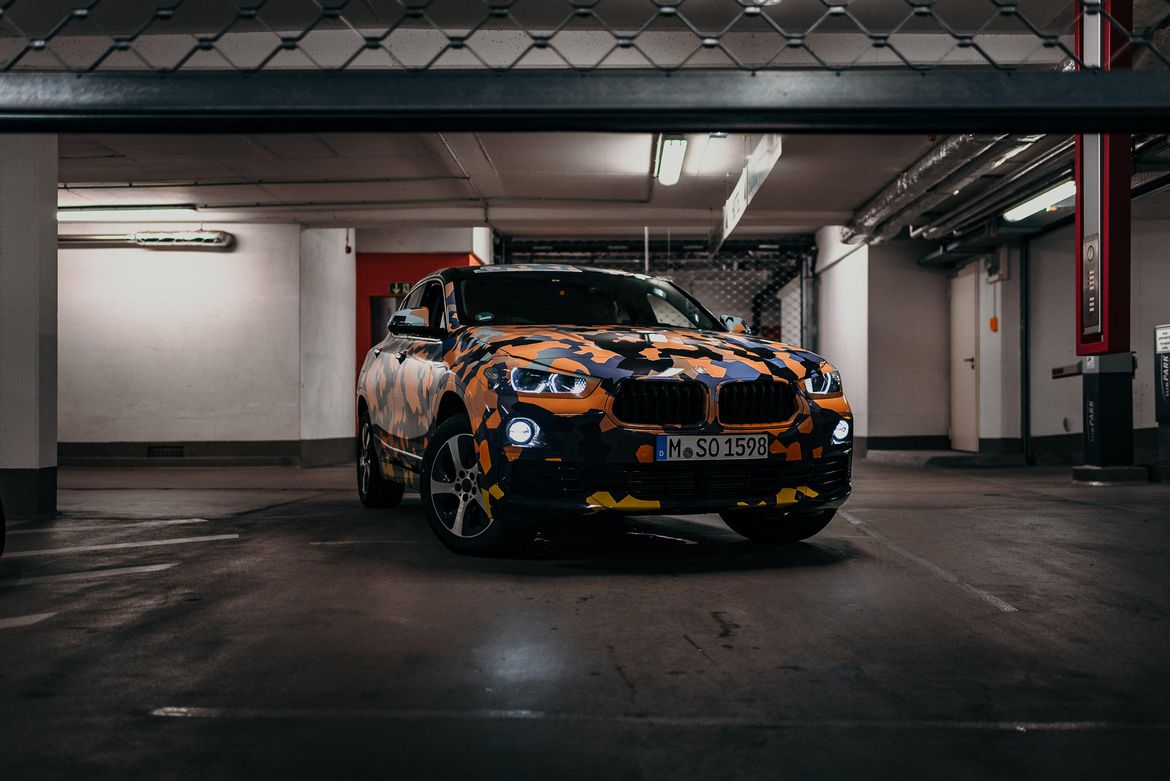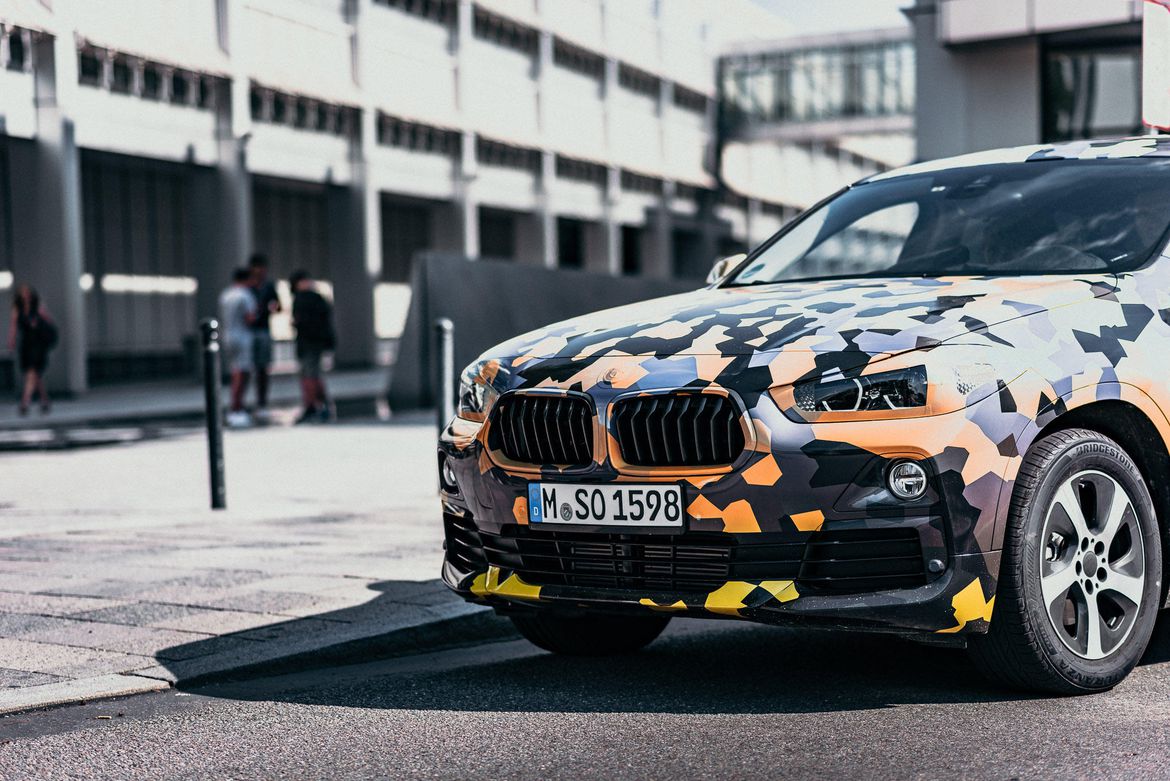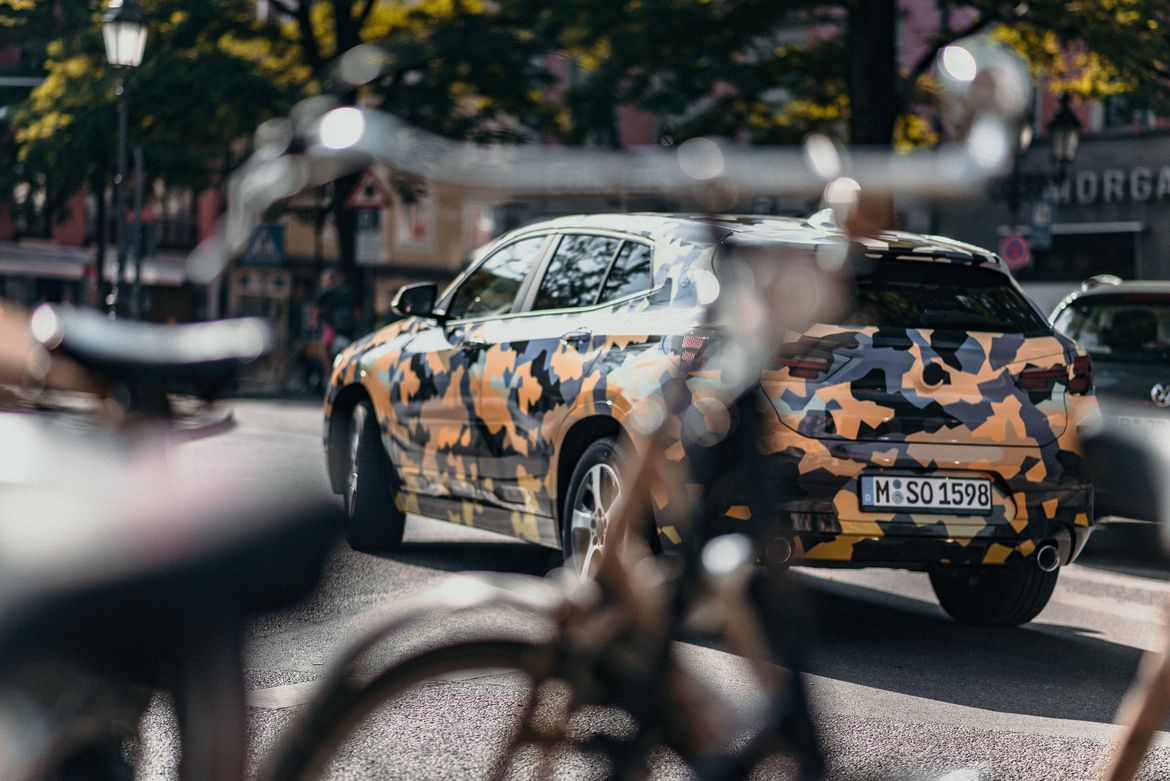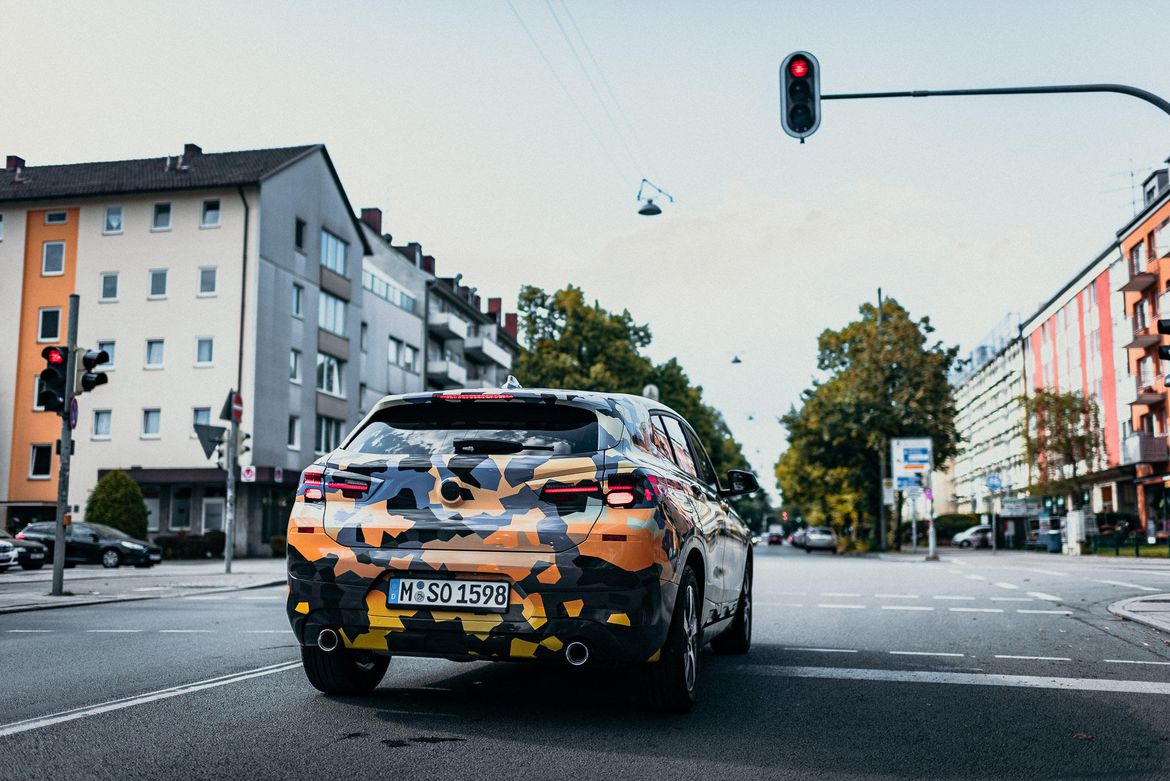- The BMW i8 Roadster: two-seater with full electric convertible top that opens in under 16 seconds.
- Optimized BMW eDrive technology: more power– total output increased to 369 hp (+12 hp), a refined high-voltage battery with increased capacity and range.
- The BMW i8 Roadster: emotion-stirring design promises an intense driving experience and unadulterated freedom.
- New exterior colors E-Copper and Donnington Grey.
- New Tera World Copper with E-Copper upholstery.
- Carbon Fiber Interior Trim.
Woodcliff Lake, NJ – November 29 2017… Today, the allure of sustainable driving is poised to enter another new dimension as BMW introduced the first-ever BMW i8 Roadster matching BMW eDrive technology with the Ultimate Driving Machine. The first-ever BMW i8 Roadster takes the BMW i8’s combination of locally emission-free mobility, high-caliber performance and adds the top-down driving experience. The Roadster offers a whole new sensation of freedom, opening the door to virtually silent driving with zero CO2 emissions and bringing an extra edge of purity to open-air driving. An optimized BMW eDrive technology means more power – total output increased to 369 hp (+12 hp), a refined high-voltage battery with increased capacity and range, the first-ever BMW i8 Roadster and BMW i8 Coupe can cover up to 18 miles (preliminary) in purely electric driving. With hybrid-specific all-wheel drive, combustion engine driving the rear wheels and the electric motor driving the front wheels, acceleration 0 to 60 mph takes just 4.2/4.4 seconds (preliminary) Coupe and Roadster respectively with both reaching an electronically limited top speed of 155 mph.
Following the world premiere of the first-ever 2019 BMW i8 Roadster at the Los Angeles Auto Show 2017, sales will commence in spring 2018. Simultaneously, the new 2019 BMW i8 Coupe will also be available at certified BMW centers with both models offering LifeDrive vehicle architecture designed for BMW i cars. Price to be announced closer to market launch.
Vehicle concept and driving experience.
The BMW i8 has performed the role of sports car of the future with extraordinary success since 2014. The progressively designed 2+2-seater doubles up as an eye-catching object of desire and a technological pioneer. Indeed, the BMW i8 has been the world’s best-selling hybrid sports car since it first hit the roads in 2014 and has collected an array of awards in recognition of its visionary design and trailblazing vehicle concept. The BMW i8’s plug-in hybrid drive system has won the International Engine of the Year Award three years in succession (2015 – 2017) and paved the way for the constantly expanding number of plug-in hybrid models from the BMW and MINI brands.
The aluminum Drive module combines the powertrain, high-voltage battery, suspension, crash system and structural functions, while the Life module takes the form of a passenger cell made out of carbon-fiber-reinforced plastic (CFRP). The first-ever BMW i8 Roadster also benefits from a light-weight construction, complete with low center of gravity and even weight distribution. The aerodynamically optimized exterior – with model-specific gullwing doors and a soft-top roof that also displays great visual lightness – is a fine exponent of the signature BMW i design language. The result is a two-seater boasting a distinctive and elegantly silhouette, and delivering an immediate promise of instantaneous power ready to be unleashed.
The BMW i8 Roadster: two-seater with electrically operated soft-top roof and additional on-board storage space.
Passengers inside the first-ever BMW i8 Roadster can either enjoy the open sky or a high-quality, all-season fabric soft-top with additional soundproofing. The electrically operated convertible top, opens and closes in less than 16 seconds and while the vehicle is in motion at up to 31 mph.
The BMW i8 Roadster is alone among its rivals in offering owners a fabric soft-top which stows away into a perpendicular position in the rear when opened and therefore takes up very little space. The three segments of the roof fold vertically in a ‘Z’. Additional storage space between the roof box and the seats for the driver and front passenger is around 3.5 ft3 (preliminary figure). In combination with the storage area in the rear, which can accommodate 4.7 ft3 cargo, the rear compartment helps to ensure the open-top version of the plug-in hybrid sports car is also as well equipped as possible for everyday use.
Opening the roof raises the rear window automatically by around 1.9 inches into a comfort position. By raising the rear window, the air flow is guided towards the rear, reducing wind turbulence optimizing the passenger’s experience. The driver can adjust the height of the rear window at the touch of a button to control the impact of the inflowing air as desired.
Intelligent lightweight design and innovative production technology also play a key role in the construction of the soft-top. For example, aluminum elements connecting the roof mechanism with the body of the first-ever BMW i8 Roadster are produced in a new 3D printing process. This manufacturing method for aluminum components breaks new ground in the automotive industry and allows the topologically optimized bracings to be produced in a geometric form, which would not be possible using conventional casting techniques and ensures an optimal balance between component rigidity and weight.
Optimized BMW eDrive technology: more power, increased range; electric driving experience raised another notch.
Rigorously developed BMW eDrive technology powers both the first-ever BMW i8 Roadster and new BMW i8 Coupe. The number of driving situations where the electric motor is solely responsible for powering the car has been significantly increased. By contrast, the combustion engine is only brought into play when accelerating hard, and is switched off again far more frequently with a measured driving style. The optimized operating strategy of the intelligent energy management highlights the future-focused character of the new BMW i8 Coupe and ensures that drivers of the first-ever BMW i8 Roadster can enjoy silent open-top driving with zero local emissions.
Underpinning this new level of locally emission-free electric mobility is the updated version of the lithium-ion battery developed for the BMW i8. The high-voltage unit is located centrally in the car’s underbody and its cell capacity is up from 20 to 34 Ah and gross energy capacity from 7.1 to 11.6 kilowatt hours (kWh, net energy capacity: 9.4 kWh). Plus, the cell configuration allows a 12 hp increase in peak output to 141 hp and 184 lb-ft of torque, lacing quick sprints on pure-electric power with an even sharper streak of dynamism.
The electric range of the i8 has also been increased. The first-ever BMW i8 Roadster and BMW i8 Coupe can cover up to 18 miles (preliminary) in purely electric driving. And that broadens the reach of all-electric mobility well beyond the city limits.
Design.
The BMW i8 is the world’s first sports car to be developed from the outset primarily under the banner of sustainability. Groundbreaking lightweight design, systematic improvement of aerodynamics and advanced plug?in hybrid technology. The framework for the concept’s implementation was provided by the brand new LifeDrive vehicle architecture for BMW i models, whose horizontally split structure comprising an aluminum chassis and a CFRP passenger cell offers an exceptional degree of design freedom. The visionary styling of the BMW i8 Coupe therefore succeeds in expressing not just the car’s dynamic performance credentials, but also its outstanding efficiency. A string of prestigious accolades, including the iF Design Award and the Red Dot Award, testify to the design’s quality and allure. And the BMW i8 Roadster translates the unmistakable BMW i design language to another vehicle concept, fusing the dynamic proportions of the i8 with signature roadster features to give it a character all of its own.
Their proportions, lines and surface design mark out the BMW i8 Coupe and the BMW i8 Roadster as belonging to a new breed of sports car. A flat hood, visible aerodynamics measures, short overhangs, a long wheelbase, large track widths and an elongated roofline create an aura of dynamism, lightness and efficiency. On an individual level, meanwhile, the BMW i8 Coupe stands out as an extremely sporty 2+2-seater, while the first-ever BMW i8 Roadster exudes the freedom of open-top motoring for two.
The BMW i8 Roadster: emotion-stirring design promises an intense driving experience and unadulterated freedom.
The design of the BMW i8 Roadster is awash with individual highlights that radiate elegance. The soft-top roof has a visual lightness to go with its low physical weight and serves as a defining element of the silhouette in reinforcing the road-hugging impression made by the car’s low center of gravity. The body’s dynamic wedge shape can also be best appreciated when viewing the two-seater in profile.
When opened, the BMW i8 Roadster’s broad roof retracts fully into the rear end, lending greater emphasis still to the car’s low-slung silhouette. The CFRP passenger cell’s robust structure means the soft-top could be designed with generous width and so create an amply sized window to the sky. The rear window extends into a comfort position as the roof folds away and can serve as a draught stop in any setting.
The B-pillars of the first-ever BMW i8 Roadster are emblazoned with beautifully made model-specific badges bearing the inscription “Roadster”. A similar logo can be found on the tail of the sporty two-seater.
New exterior paint finishes, exclusive light-alloy wheels.
The design cues common to both the new BMW i8 Coupe and first-ever BMW i8 Roadster include the gullwing doors that open forwards and upwards as well as optimized aerodynamics. The low hood, BMW kidney grille, air flap control system, Air Curtains in the front apron, flat underbody, contoured side skirts, “stream flow” lines of the car’s flanks, and air ducts between the rear lights and roof frame allow the air to be guided effectively. The flow of cooling air at the front of each model has now been re-routed. Instead of rushing out through the outlet in the hood, the air escapes at the sides of the car near the wheel arches and into the underbody. This ensures a pleasant cabin temperature is maintained at all times, especially when travelling in the first-ever BMW i8 Roadster with the roof down.
E-Copper metallic and Donington Grey metallic have been added to the choice of exterior paint finishes available for the new BMW i8 Coupe and first-ever BMW i8 Roadster. Both are combined with accents in Frozen Grey metallic.
The first-ever BMW i8 Roadster is equipped as standard with exclusive 20-inch BMW i light-alloy wheels in Radial-spoke style bicolor design with mixed-size tires (Jet Black design optional). Intelligent lightweight design also make an impact here, with each wheel weighing around 2.2 pounds less than the lightest wheels previously available for the BMW i8. In addition to the standard 20-inch light-alloy wheels, customers can choose from another four light-alloy wheel variants with the same dimensions.
The BMW i8 Coupe also includes a model-specific design feature indicating its identity: “Coupe” badging on its B-pillars.
Innovative interior design in a range of new looks.
The progressive style of the BMW i8 Coupe and first-ever BMW i8 Roadster also shines through clearly in their interior design. Standard specification for both models includes a sports steering wheel and multifunctional instrument display, plus Giga interior trim comprising full-leather upholstery in Ivory White for the Coupe and Ivory White/Black for the Roadster. Giga interior trim can alternatively be specified in dark Amido for both models and there is also the option of Halo interior trim featuring cloth/leather upholstery in a Carum/Dalbergia color scheme.
New to the portfolio for the first-ever BMW i8 Roadster and new BMW i8 Coupe is Tera World Copper interior trim, a high-end option featuring cloth/leather upholstery in an Amido/E-Copper color scheme.
Powertrain, chassis and body.
With its intoxicating blend of advanced BMW eDrive technology, BMW TwinPower Turbo technology internal combustion engine, sophisticated chassis technology, hybrid-specific all-wheel drive and rigorously applied lightweight design measures, the BMW i8 has come to epitomize the future of the Ultimate Driving Machine. Since its market debut in 2014, it has established itself as the world’s highest-selling plug?in hybrid sports car. It succeeds in melding sports car performance qualities with the sort of fuel economy and emissions usually associated with compact models. The LifeDrive architecture, meanwhile, ensures a perfect distribution of weight.
The new BMW i8 Coupe and first-ever BMW i8 Roadster are powered by a drive duo in the form of a hybrid synchronous electric motor and BMW TwinPower Turbo technology 1,499 cc 3-cylinder gasoline engine (228 hp and 236 lb-ft). The engine’s power is channeled to the rear wheels through a 6-speed Steptronic automatic transmission, while the electric motor propels the front wheels via a two-speed automatic gearbox. The end result is a hybrid-specific all-wheel-drive system that glues the car to the road.
A refined high-voltage battery and an electric motor with more power.
The constant process of development has enhanced the performance capabilities offered by BMW’s eDrive technology. The energy capacity of the latest version of the model-specific lithium-ion battery is far greater, battery cell capacity having increased from 20 to 34 ampere hours (Ah) and gross energy capacity from 7.1 to 11.6 kilowatt hours (kWh, net energy capacity: 9.4 kWh). This advance is rooted primarily in advances made to the battery cell technology, which in turn stem from the BMW Group’s ever-increasing expertise in the field of electrical energy storage.
These extra energy reserves have made it possible to raise the electric motor’s peak output by 12 hp to 141 hp. In typical electric motor fashion, it generates its maximum torque of 184 lb-ft from standstill, which means it is ideally equipped to deliver razor-sharp responses to the slightest movement of the accelerator. The electric motor developed by the BMW Group also stands out with its consistent power delivery up to very high revs.
The battery cells’ higher capacity means that the proportion of all-electric driving can be increased substantially, even in hybrid mode. With the default driving mode engaged, both the new BMW i8 Coupe and first-ever BMW i8 Roadster are capable of pulling away and reaching speeds of up to 65 mph purely on the electric motor’s power, making it possible to drive with zero local emissions. And if the eDrive button is pressed, the all-electric threshold of both models is increased to 75 mph.
The new high-voltage battery benefits the electric range of the two plug-in hybrid sports cars too. The first-ever BMW i8 Roadster and BMW i8 Coupe can cover up to 18 miles in purely electric driving, almost 30 percent more than before (preliminary figures).
Three-cylinder gasoline engine with improved sound and lower emissions.
The i8’s combustion engine has also undergone further optimization to ready it for the new Coupe and Roadster. The turbocharged three-cylinder unit featuring direct injection and VALVETRONIC variable valve timing extracts a maximum output of 228 hp from its displacement of just 1.5 liters, plus peak torque of 236 lb-ft. It is pleasantly refined and generates a distinctive soundtrack that now has an even sportier note when its power reserves are called upon.
The system output produced by the electric motor and gasoline engine acting in unison has increased to 369 hp in the new BMW i8 Coupe and first-ever BMW i8 Roadster. The new BMW i8 Coupe accelerates from 0 to 60 mph in 4.2 seconds (preliminary), while the first ever BMW i8 Roadster accelerates in 4.4 seconds (preliminary). Both models have an electronically limited top speed of 155 mph.
Combined fuel economy in everyday driving, both models return fuel economy and emissions figures that undercut those for conventionally powered sports cars with similar outputs by around 50 per cent, yielding approximately 70 MPGe (preliminary figures).
Maximized driving pleasure with intelligent energy management and hybrid-specific all-wheel drive.
In hybrid mode, the electric motor provides a power boost to assist the engine when vigorous acceleration is required. The electric motor is also able to recuperate energy and feed it to the high-voltage battery on the overrun and under braking. The gasoline engine’s high-voltage starter-generator can similarly generate additional reserves of electricity, thereby ensuring that sufficient energy is on tap at all times for the electric drive system in the new BMW i8 Coupe and first-ever BMW i8 Roadster.
This blend of dynamism and efficiency is further honed by the intelligent energy management’s proactive function. When the navigation system’s route guidance function is activated, the energy management ensures the electric motor is employed as extensively and as wisely as possible from an efficiency point of view. The system analyses the route in full and prompts the powertrain management to run on purely electric power, particularly over low-speed sections of the journey.
BMW i8 Roadster with model-specific chassis and body features.
The high-end chassis technology in the new BMW i8 Coupe and first-ever BMW i8 Roadster is based on a double-wishbone front axle and a five-link rear axle, whose aluminum components have been engineered for optimum weight and rigidity using specific design techniques and production processes. Also standard on both models is Dynamic Damper Control. The bespoke tuning of the suspension and damping systems, the specially configured steering characteristics, a firmer roll stabilization set-up and precise tweaks of the DSC parameters together ensure the first-ever BMW i8 Roadster boasts all of the plug-in hybrid sports car’s hallmark handling and performance qualities.
The approach of making systematic use of lightweight design measures has been meticulously adapted to the specific requirements of the Roadster model. The open-top two-seater comes with newly designed frameless gullwing doors made from CFRP with an aluminum outer shell, while the windscreen frame is made entirely from CFRP. This ultra-strong high-tech material is ideally equipped to provide exceptional rigidity, maximizing the car’s occupant protection in case of a roll-over situation. CFRP is also used to manufacture the side skirts with their extra-large cross-section. The skirts are a contributory factor in the body’s stiffness, as are the additional panels in the rear suspension and the specially designed struts for the front and rear axle. Thanks to the high-strength CFRP body, the chassis and body elements specific to the BMW i8 Roadster result in an extremely small weight gain when compared to other open-top models. The unladen weight of the new BMW i8 Roadster stands at 3,513 pounds, just 132 pounds more in approximate terms than that of the new BMW i8 Coupe (preliminary figures).
Controls, equipment, BMW Connected, ConnectedDrive and 360° ELECTRIC.
Both the display and control concept and the equipment of the new BMW i8 Coupe and first-ever BMW i8 Roadster serve to enhance their exhilarating sports car feel and the intense hybrid driving experience. As well as its multifunction buttons, the leather sports steering wheel also comes with shift paddles for changing gear manually, while the standard heated seats for the driver and front passenger are electrically adjustable.
Driving Dynamics Control switch and eDrive button provide five driving modes.
Drivers will find an eDrive button in the center console alongside the Driving Experience Control switch to allow them to adapt not just the vehicle’s set-up but also the drive system’s operating strategy. This provides a total of five driving modes to choose from: hybrid drive with COMFORT, SPORT or ECO PRO settings and all-electric driving in COMFORT or ECO PRO mode. If the eDrive button is pressed in either COMFORT mode – which strikes an even balance between sporty and efficient characteristics – or ECO PRO mode (designed for particularly fuel-efficient driving), power is provided by the electric motor alone up to a speed of 75 mph. The combustion engine will only cut in automatically if the battery’s energy reserves are nearly fully depleted or the driver summons full power via kickdown.
It is in SPORT mode that the intelligently controlled interaction between electric motor and combustion engine can be experienced at its most intense. Both power units deliver extra-sharp performance, accelerator response is faster and the power boost from the electric motor is maximized. And to keep the battery topped up, SPORT mode also activates maximum energy recuperation on the overrun and under braking. The intelligent energy management’s mode of operation can be visualized by calling up the energy flow graphic in the Control Display via the iDrive menu.
The instrument cluster takes the form of a fully digital multifunctional instrument display, which shows the car’s speed and driving status information in a format and color scheme selected to suit the driving mode engaged. Traditional, orange-colored circular dials appear in SPORT mode, in COMFORT mode, a blue “power meter” display keeps the driver up to speed on what the electric motor is up to, and ECO PRO mode supplements this with an efficiency gauge.
Navigation system Professional and Driving Assistant as standard.
The Navigation system Professional, also included as standard, is controlled using the latest iDrive 6.0 operating system, comprising both a Touch Controller on the center console and an 8.8-inch freestanding touch screen Control Display. The main menu is now presented on the screen in the form of horizontally arranged tiles with a live mode. The standard audio system features a 12 speaker 360 W Harman Kardon HiFi system with HD tuner for digital radio reception.
When it comes to driver assistance systems, the BMW i8 Coupe and BMW i8 Roadster are both equipped as standard with a model-specific BMW Head-Up Display. When the driver is shifting gears manually in SPORT mode, this switches to a sport display that adds an rpm readout, gear indicator and Optimum Shift Indicator. Also included as standard are a cruise control system with braking function as well as the Driving Assistant Package including Surround View. This system comprises Frontal Collision warning with City Collision Mitigation Daytime Pedestrian Protection Park Distance Control with sensors at the front and rear, Automatic Highbeams, Speed Limit Info and Cross Traffic Alert and Side and Top View Cameras.
BMW Connected and ConnectedDrive: sustainable mobility as an integral part of digital lifestyles.
The enthralling driving experience offered by a plug-in hybrid sports car is enriched by the digital services offered by BMW Connected and ConnectedDrive. Intelligent connectivity between vehicle, driver and the outside world paves the way for remarkably efficient mobility, increases comfort, expands the infotainment offering and helps with individual mobility planning.
BMW Connected is a personal mobility assistant that interfaces the vehicle with the customer’s selected touchpoints, such as a smartphone or smartwatch, via the flexible Open Mobility Cloud platform. This turns the personal mobility assistant into a seamlessly integrated component of the driver’s digital life, available anytime and anywhere. The new BMW i8 Coupe and first ever BMW i8 Roadster also benefit from the latest BMW Connected and BMW Connected+ digital services. These include intelligent route planning, complete with refueling stops at a charging station or filling station (Send my Routes to Car), sharing of the current trip status by text message and live link (Share Live Trip Status), personalized display of the relevant in-vehicle information (BMW Onboard), seamless transfer of route guidance to a smartphone or smartwatch once the car has been parked (Navigate Door-to-Door) and linking of contact details and addresses so they can be imported directly into the navigation system (My Destinations).
ConnectedDrive Services are also included as standard, providing access to functions such as Real Time Traffic Information and On-Street Parking Information, as well as the Concierge Services. The standard built-in SIM card also allows drivers of the first-ever BMW i8 Roadster to use Intelligent Emergency Call with automatic locating and accident severity detection. With the new BMW Teleservice Accident Assistance, the vehicle now also detects low-speed collisions below the threshold for airbag deployment. The driver receives a message in the iDrive display offering to contact the BMW Accident Assistance service directly. A push of a button is all it takes to obtain professional support from the BMW Accident Assistance team, who can also put the customer in touch with a BMW Service Partner if necessary. ConnectedDrive Services are also required to access additional services such as Online Entertainment and unlimited internet access, as well as to integrate various apps.
360° ELECTRIC: new charging cable, BMW i Charging Station.
360° ELECTRIC is a range of products and services that help make electric mobility a convenient, everyday experience. The functionality of the standard charging cable supplied with the first ever BMW i8 Coupe and first-ever BMW i8 Roadster has been optimized and includes a temperature sensor. Charging at home is extremely user-friendly thanks to the BMW i Charging Station which can supply 7.2 kW of power to charge the high-voltage battery and can fully charge it in under 3 hours. Drivers with a registered ChargeNow card have unrestricted access to the world’s largest network of public charging station
BMW Original Accessory: BMW TurboCord™ EV Charger.
Now available as a BMW Original Accessory the BMW TurboCord™ Electric Vehicle Charger can be purchased at certified BMW Centers for $499 MSRP. This premium charging solution provides BMW i and BMW iPerformance drivers with the ultimate charging experience – flexible dual-voltage (120 V / 240 V) capability and nearly three-times faster charging – all in the smallest, lightest UL-listed portable charger available. The BMW TurboCord™ EV Charger components have been specifically engineered by BMW to meet BMW Group standards and requirements, featuring a convenient 20 ft charging cord, and provides two chargers in one. Level 1 charging is readily available when plugged into any 120 V outlet and it also allows customers to charge up-to at 3.6 kW, nearly three-times faster than the standard occasional use cable (OUC) when used with a 240 V outlet (NEMA 6-20). Also integrated are such state-of-the-art safety features as unit and plug temperature monitoring, automatic shut-off and a rugged, waterproof, submersible enclosure (NEMA 6P) that enables users to safely and reliably charge indoor and outdoor.
BMW Group In America
BMW of North America, LLC has been present in the United States since 1975. Rolls-Royce Motor Cars NA, LLC began distributing vehicles in 2003. The BMW Group in the United States has grown to include marketing, sales, and financial service organizations for the BMW brand of motor vehicles, including motorcycles, the MINI brand, and the Rolls-Royce brand of Motor Cars; Design works, a strategic design consultancy based in California; technology offices in Silicon Valley and Chicago, and various other operations throughout the country. BMW Manufacturing Co., LLC in South Carolina is part of BMW Group’s global manufacturing network and is the manufacturing plant for all X5 and X3 Sports Activity Vehicles and X6 and X4 Sports Activity Coupes. The BMW Group sales organization is represented in the U.S. through networks of 344 BMW passenger car and BMW Sports Activity Vehicle centers, 153 BMW motorcycle retailers, 127 MINI passenger car dealers, and 36 Rolls-Royce Motor Car dealers. BMW (US) Holding Corp., the BMW Group’s sales headquarters for North America, is located in Woodcliff Lake, New Jersey.
Information about BMW products is available to consumers via the Internet at: www.bmwusa.com.
Journalist note: Information about BMW and its products in the USA is available to journalists on-line at www.bmwusanews.com




